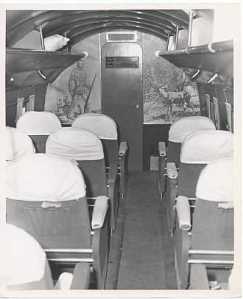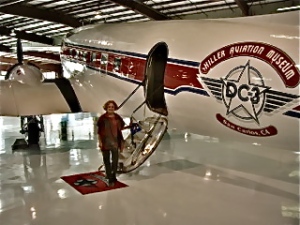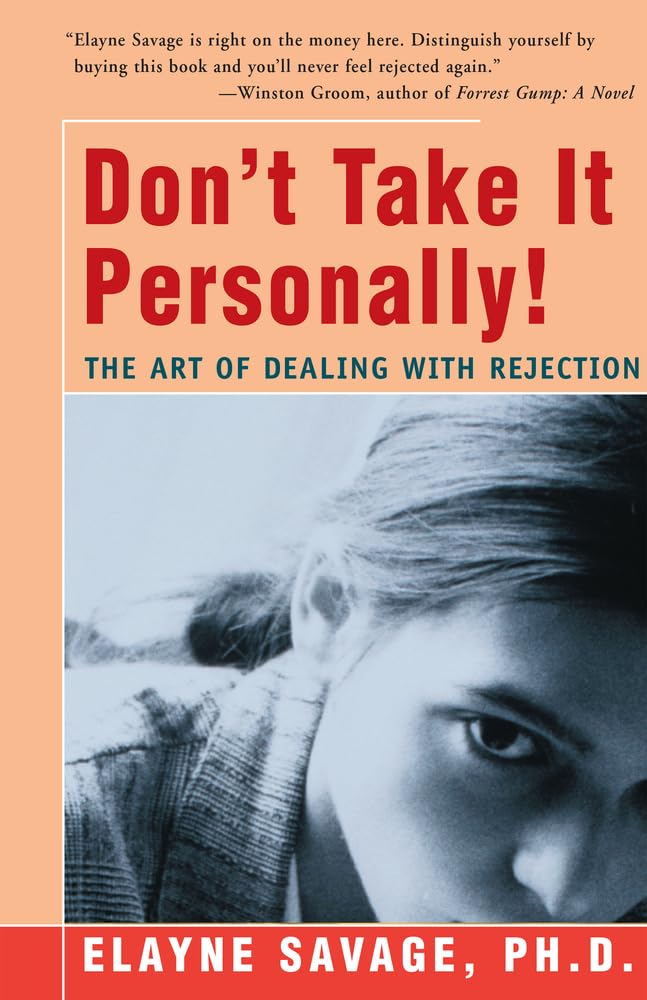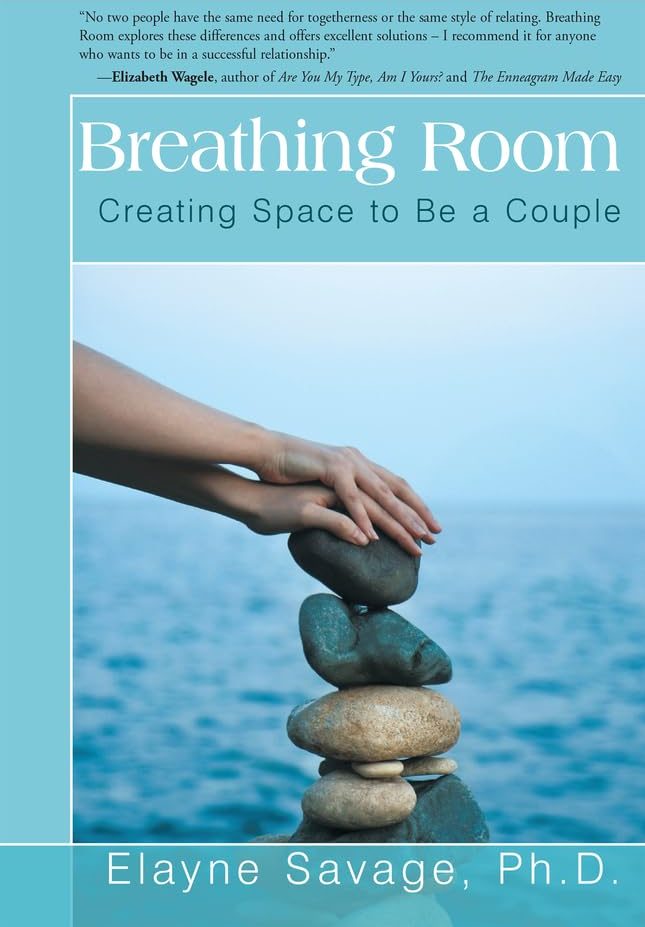by Elayne Savage, PhD
“There Is to Be No Grieving,” describes how incomplete grieving has powerful long-term effects throughout our lives.
As with others who have experienced significant childhood challenges, I’m repeatedly reminded that healing is a life-long process.
The publication of my story about delayed grieving originally appeared in Elizabeth Wagele's The Enneagram of Death – Helpful Insights by the 9 Types of People on Grief, Fear and Death.
Writing this gives me the opportunity to take a long look at important personal issues: dealing with exposure of course, as well as loss and abandonment. I can see now how I had let these deaths define me for many years.
Experiencing this healing process has been quite a journey!
I had just returned from overnight camp — it was my first time away from home and I missed my mother terribly. I couldn’t wait to tell her all about my week .
A few minutes after I walked in the door Mom announced she’d be leaving on a plane the next day with my grandmother. I couldn't believe it. So what if my grandmother needed medical tests at the Mayo Clinic? Why did it have to be my mother who took her? I spent the rest of the day in my room sulking.
As they were leaving for the airport I wanted to hug her and say, "Please don’t go, I need you.”
Instead, I screamed at her, “I hate you—I wish you were dead.”
They never arrived. The plane with sixteen passengers and three crew members on board crashed into a cornfield in Swaledale, Iowa just south of Mason City. The pilot and co-pilot died. The flight hostess and six passengers survived. Debris from the crash was spread along a line of more than 500 feet. The date was August 22, 1954.
During the long layover in Des Moines, my mom learned a Braniff flight would depart earlier than her scheduled flight. What she didn’t know was the Braniff flight was a “puddle jumper,” stopping at every city en route, and a fierce storm was approaching. The Mason City flight controller instructed the pilot not to land. He decided to try anyway.
I was twelve years old. My brother Lee was nine.
Losing our mother and grandmother in a plane crash has defined us most of our lives.
The Long Wait for News
We waited into the evening for my mom to signal us from Rochester saying they had arrived safely. I was looking forward to our little phone company trick where she’d place a person-to-person call for “Aloysius.” We’d say, “Sorry, Aloysius is not here,” then we’d giggle about how we got away with something.
But the call never came.
I was absorbed in the sewing project on my lap, not paying much attention to the TV news. I had just returned from overnight camp where all the girls except me were wearing embroidered cutoffs. My dad said they cost too much to buy, so I was embroidering my own.
I heard the announcer’s ominous voice; “A Braniff DC-3 went down during a storm … on a farm …near Mason City, Iowa.” My dad jumped up, muttering something about Braniff not being the right airline. Then he was on the phone for a long time.
I just sat there, stitching. And thinking about how I had acted so badly that morning when I screamed, "I hate you, I wish you were dead!"
Poof. They Were Gone
So I was sitting cross-legged in the overstuffed chair, staring at the cutoffs in my hands. I forced myself to concentrate on pulling the needle and embroidery thread through the thick denim. In and out, making those tiny stitches, repeating to myself, “Dad said that wasn’t the right plane.” Out of the corner of my eye I could see he was still in the kitchen on the phone.
I’ll never forget the slump of his shoulders and that awful look on his face as he walked back into the living room. “Their plane crashed. Your mother is dead. So is your grandmother.” I couldn’t believe his words. I could only stammer, “You’re kidding, aren’t you? Tell me you’re kidding.”
Illustration by Elizabeth Wagele
My uncles arrived. Uncle Joe had a handkerchief tied around his neck that smelled of Ben-Gay. Uncle Max kept repeating the story of the drive to the airport. My mother and grandmother almost didn’t take the flight because my mother left her purse at home. Uncle Max gave her a wad of cash and they boarded the plane. No wonder my dad had been so long on the phone—since my mother had no purse, she had no I.D. Finally the temporary morgue was able to identify her from the inscription in her wedding band.
My nine-year-old brother, Lee, was still sleeping. “Tomorrow will be soon enough to tell him,” the adults decided. “Let him sleep.”
The next morning Dad told Lee about the crash urging, “You have to be a brave soldier.” Then Dad bundled us off to my aunt and uncle’s. I wanted to talk to Lee about the crash, but I didn’t know how. The three of us rode across town in silence. “There are only three of us now,” kept repeating in my head.
Later that morning, we were eating pancakes at my aunt’s kitchen table. The radio was on: “Two Omaha residents were killed yesterday in a Braniff Airlines crash—Goldie Raskin and her mother, Sarah Wolfson.”
“They’re dead?” my brother gasped. “Dead?” He ran out of the kitchen, sobbing.
Lee and I didn’t go to the double funeral. Dad thought it best we stay home. “The biggest funeral Omaha has ever seen,” people bragged. “There was even a police escort!”
Nothing seemed real. There was the shock of the newspaper headlines. I was embarrassed to see my mother’s picture on the front page. I wished they’d used a better photo. It was so blurry I could hardly tell it was my mom. The TV and newspaper reporters were angling for an interview with Lee and me. Thank goodness my family kept them away.
After the funeral, big-bosomed women, smelling of talc, pulled me close, clucking, “Oh, you poor baby.” I couldn’t breathe. I overheard wisps of speculations about the cause of the crash, the condition of the bodies. I learned some new information: almost half of the passengers survived the crash! I had thought everyone died.
That’s when my mind began playing tricks. “Maybe there’s a big mistake and they didn’t die after all,” would alternate with, “Why did they have to be the ones to die?” In the middle of this confusion, my camp counselor phoned me saying how sorry she was. Maybe she wasn’t upset with me anymore about the trouble I caused in the cabin. Camp seemed like a very long time ago.
Things stayed surreal for many years. My dad removed all photos of my mother. Lee and I thought he’d thrown them out, but when he died thirty years later, Lee found the albums hidden in the back of the highest shelf of his closet. He had moved with them four times, yet we never knew they existed. Shortly after she died he sold his business, took a job traveling, and hired a housekeeper. So we lost him much of the time as well.
The unspoken family rule was: There is to be no grieving. Our grief was to remain wrapped in silence.
There was no place to have feelings. It didn’t cross anyone’s mind that Lee and I would benefit from seeing a counselor or therapist. In those days it just wasn’t done. I was doing a lot of acting out—mostly getting kicked out of class and study hall for talking.
My middle school principal, Dr. Brown, tried to counsel me but I completely shut down. My high school English teacher, Marcia Blacker, tried as well, asking “Is everything okay at home?” I said, “Just fine,” but it wasn’t. (Years later I actually searched for and located Ms. Blacker and thanked her for caring.) I threw myself into schoolwork, socializing, school clubs and cheerleading so I didn’t have to feel the sadness or spend time in a lonely house.
For many decades I lived with this tender, unhealed wound. Every year I dreaded the arrival of August 22. I felt different from friends and professional colleagues. It has always been awkward to explain that my mother and grandmother died in a plane crash. People didn’t know how to respond. I couldn’t talk about it. I couldn’t cry about it.
Thank goodness I was required to start therapy as part of my Psychology Master’s program in my mid thirties. Luckily I found a therapist who understood unresolved grief and abandonment fears.
I worked for many years to move past this childhood double loss.
I began to recognize my feelings of sadness and hurt and anger. I began to understand I don’t have to be a scared child any longer.
Yet something more needed to be done. Fortunately a grief counselor reminded me: in order to grieve a loss and move on we need to make it real. You’d think as a psychotherapist and relationship coach I would have known that. But we so often miss our own issues and solutions until someone else points them out.
I woke up one morning knowing the best way to make this loss real would be to arrange a private visit to the kind of plane my mother and grandmother died in—a DC-3.
Becoming a DC-3 Groupie
Finally, I gathered the courage to track one down and found a DC-3 in pristine condition in Van Nuys: the private plane of Clay Lacy, a major aviation figure. I flew from Berkeley to Los Angeles for the adventure, taking along my yellowing newspaper clippings of the crash, and brought photos of Lee, me, and our children. I carried two long-stemmed coral roses.
Interior of a DC-3
DC-3’s are really quite adorable. The plane was waiting for me on the tarmac, it’s nose high in the air and it’s tail almost touching the ground. When the door swings down it reveals the steps on its backside. I was so excited as I climbed the steps and peered into the plane. Then my heart sank: “What happened? This is not the passenger plane I was expecting.” I had no idea many DC-3′s were built solely as executive planes. This one was built for the president of United Airlines and later used by Governor Jimmy Carter. There were large, comfy chairs, burl wood cocktail tables, a sofa, and a long open bar. I thought: “Well here I am. I’ll just make the most of it.”
I ended up spending most of the time in the cockpit because I knew it would be identical to the one on the plane my mother and grandmother were on.
Their plane would have had two rows of seats on one side of the narrow aisle, and one row on the other. What a narrow, confined space it is! I understood for the first time how difficult that flight must have been for my claustrophobic mom. Taking off and landing several times along the route must have been miserable for her.
I could sense the essences of my mother and grandmother. I imagined tucking these essences into the blue pouch I brought with me. I had never used the pouch before. Now I know it was waiting for just the right time to be the guardian of something precious. I could feel my mother’s presence. We could laugh together, sharing memories.
I got up the courage to talk with her about her experience of the plane falling from the sky. I imagined her telling me her last thoughts before she died.
As I was sitting on the plane the shackles that had confined me for so many years fell away. I could feel myself rebalancing and realigning. I experienced the healing and liberation that had eluded me for so long.
Elayne and a DC-3
I guess you could say I’m becoming a DC-3 groupie! Jason Gore, a colleague and executive coach located another DC-3 for me to visit. He brought his camcorder and videotaped me as we sat on the plane. Thanks to Jason’s sensitive coaching I had a long talk with my mother that day. We were able to say things to each other that we could not say when she was alive and I was twelve years old.
I told her how her death influenced both Lee and me in the paths our lives have taken; how much I miss her and what I appreciate about her. She told me about her dreams for us and how proud she was of our successes. She assured me she would always be present in our lives, watching over us . . . and our children . . . and our grandchildren.
My visits to the DC-3s have been life changing. The best part is how this profound experience has been captured on video to share with others who are grieving.
My college roommate has reminded me over the years of my inability to grieve in those days. She thought it odd how I never talked about my mother dying in a plane crash. Recently we watched the DC-3 video together. Bette made a powerful observation: how much I’ve matured in my ability to grieve and how I have allowed my mother to mature as well. My mother and I were having an adult-to-adult conversation on the DC-3! And we could at long last develop understanding and compassion toward each other.
Elayne following first DC-3 visit
Out of the Ashes — A Community of Survivors
Truth be told, each time I’ve told my story, I’ve fantasized someone will recognize the circumstances of the crash and contact me: "I knew someone who survived that crash" or "I know a family who lost someone on that plane."
And then it happened. The editor of the Mason City Globe Gazette interviewed Lee and me. One by one, members of the Swaledale community stepped forward to share their stories and to describe how deeply affected they are by memories of the day the DC-3 crashed in the cornfield. How neighbors volunteered for search and rescue to save the injured and protect the dead. How their farm tractors pulled ambulances through muddy fields. How they pulled down barn doors to use as stretchers.
I was stunned to learn how this community has been dealing with their own unresolved grief all these years. Just like us! Even the newspaper editor wrote, "Thank you for the opportunity to tell your story and to open another door in my life." He reflected how our reminiscences are a reminder that people heal at different speeds.
A few years ago, my brother Lee Raskin was in Iowa on business and was able to visit the farm where the plane crashed, accompanied by the daughter of the man who had owned the farm.
All these years we had been picturing the corn field where the plane crashed. What a surprise he had to discover due to rotation of crops, there were soybeans instead.
Sure wish I could have been there with him. I still have the bag of dirt he sent me from the field.
John Skipper former editor of the Globe Gazette wrote about Lee's powerful experience of closure: 'After 64 years, man finds closure in muddy Swaledale field where mom, grandma died in plane crash.'
Passing Down Fears
For some of us it is a struggle to move on. And some of us pass our unresolved grief along to our children. I had developed massive fears that loved ones might die and I’d be left alone. And I was passing these fears along to my daughter.
One Mother’s Day brunch when Jocelyn was about twenty-one, we were recalling how she would sob uncontrollably whenever her dad or I were late picking her up from after-school care. She remembers how she agonized that we had died in an accident.
Jocelyn and I made an amazing discovery that day. She remembers outgrowing her fears about death when she was around nine years old. I‘d been working on my own abandonment fears in therapy for two years! I don’t think it’s a coincidence that once my anxiety abated, her fears lessened as well.
My fear of abandonment affected my daughter in another way: Sometimes I could feel myself holding back from showing all my love for her. I guess I felt if I showed too much love I might lose her, just as I had lost my mother and grandmother.
More recently, when my grand daughter was eight and she was babysitting me, we were eating pizza and watching the Anastasia animated film. This is the story of the daughter of Russia’s last czar, becoming separated from her family during the Russian Revolution. When Anastasia finally reunites with her grandmother, I was surprised to see her begin to cry for her mother.
She had seen this movie many times but never before sitting next to her own grandmother.
Could our fears have transferred from me to Jocelyn and now to my grand daughter as well?
Overcoming Fears
Now I'm the grandmother, Jocelyn is the mother and Cora is the child.
I’ve been working hard to create in my life what I lost in that Iowa cornfield. I’ve been trying to do for my family what my father could not do for his—searching for ways to address our fears and overcome them together.
Because we live miles apart, for many years we had a ritual of “The Three-Girl-Photos.” It became very important to me that we would take a photo of the three of us when we are together. After all, we are the surviving women of my mother's family now!
We can fly — even soar. And carry our dreams into the world.
© Elayne Savage, PhD
Elayne's story about recovering from childhood grief appears in Elizabeth Wagele's newest book: The Enneagram of Death – Helpful Insights by the 9 Types of People on Grief, Fear and Death
or on Amazon: http://amzn.to/QLyeFk
Elayne Savage is the author of ground-breaking relationship books published in 9 languages.
You can order books and CDs directly from my website:
http://www.QueenofRejection.com/publications.htm
To order DON'T TAKE IT PERSONALLY! THE ART OF DEALING
WITH REJECTION from Amazon:
http://amzn.to/2bEGDqu
To order BREATHING ROOM — CREATING SPACE TO BE
A COUPLE from Amazon:
http://amzn.to/2bAHmIL
REPRINTING THESE BLOGS
You can use the articles in 'Tips from The Queen of Rejection'®
as long as you include an attribution and, whenever possible, a live link to my website. Please notify me where and when the material will appear.
The attribution should include as much of the following information as possible:
Elayne Savage, PhD is a communication and relationship coach, professional
speaker, practicing psychotherapist and author of Don't Take It Personally! The Art of Dealing with Rejection and Breathing Room-Creating Space to Be a Couple. To find out
more about her speaking programs, coaching and consultation services visit:
http://www.QueenofRejection.com
or call 510-540-6230
AND if you or your group can benefit from how not to take
rejection so personally, let's talk about tailoring one of my
speaking programs for you.
Contacting Elayne
I welcome your feedback as well as suggestions for topics you'd
like to see addressed in this e-letter.
Here's how you can reach me:
Elayne Savage
elayne@QueenofRejection.com
510-540-6230
Note: The COMMENTS included below are a compilation from the 4-part serialization of 'There Is To Be No Grieving' published previously.








Leave a Reply to I’mTouched Cancel reply